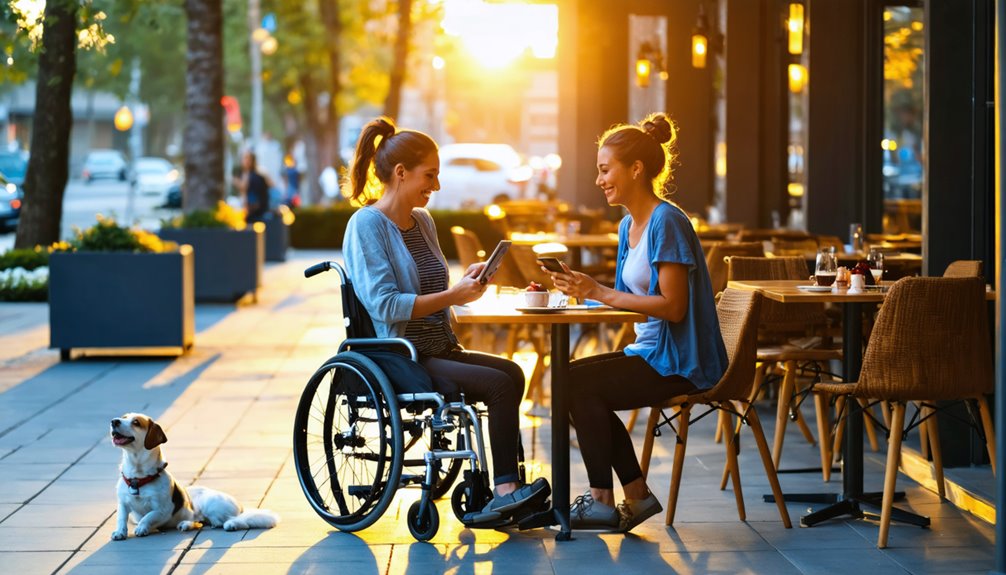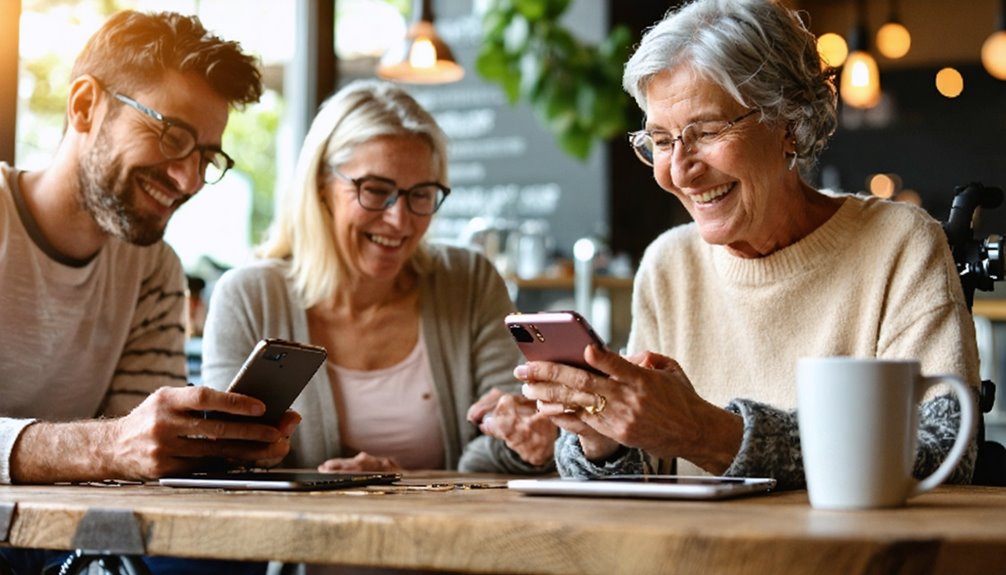Best Disabled Dating Sites: Inclusive Platforms for Real Connection

We explore which dating platforms genuinely serve disabled users with accessibility, consent-first design, and respectful community standards. From screen‑reader compatibility and captioned video to granular filters for mobility, sensory, and communication needs, some services do more than checkbox inclusion. We assess moderation transparency, privacy controls, and profile guidance that support safer, authentic connections. We’ll also note emerging tools that improve matching without compromising autonomy—so we can decide where our time and trust are best invested next.
Top Platforms Prioritizing Accessibility and Respect

While mainstream apps add accessibility features, several dating platforms are built from the ground up to serve disabled users with dignity and usability. We’ve reviewed communities such as Disabled Mate, Whispers4U, and DateAbility, which state clear moderation rules, profile guidance, and privacy controls. We note practical access: screen reader compatibility, alt text prompts, video captioning, mobility-friendly layouts, and compatibility with Assistive tech. These platforms also host Accessible events—virtual mixers and local meetups with venue details and accommodations. We see transparent pricing, reported fraud prevention, and responsive support. Together, these elements prioritize respect, reduce friction, and help us connect safely and confidently.
Key Features to Look For in Inclusive Dating Apps

Because accessibility and safety shape real outcomes, we look for features that remove barriers and protect users from the start. We prioritize clean layouts, high-contrast themes, scalable text, screen-reader support, and Accessible language in profiles and prompts. We check multiple input options—voice, keyboard, switch control—and captions for video. Sensory considerations matter: adjustable motion, haptic toggles, and audio normalization reduce overload. We value granular matching filters for disability-related preferences, flexible pronouns, and transparent profile badges for communication needs. Reliable translation, location accuracy, and queue-free onboarding help usability. Finally, responsive support, clear in-app tutorials, and offline access improve everyday continuity.
Safety, Privacy, and Community Guidelines That Matter

Even before we match, safety, privacy, and clear community rules set the tone for disabled-friendly dating spaces. We look for enforceable codes of conduct, transparent moderation, and accessible reporting. Platforms should publish safety protocols, offer privacy education, and verify profiles without exposing sensitive data. We value consent-first messaging and tools to block, mute, and escalate issues. Clear data retention and breach notices matter.
- Moderation that removes harassment swiftly and documents actions
- Optional ID or selfie checks with minimal data storage
- In-app reporting that supports screen readers
- Granular control over visibility, location, and sharing
- Plain-language FAQs on scams, doxxing, and boundary setting
Matching Tools and Filters for Diverse Disability Experiences
Although no single tool fits everyone, we look for matching systems that reflect the breadth of disability experiences and support informed consent. We assess platforms that let users disclose access needs, communication styles, mobility considerations, and sensory preferences with granular controls. Strong tools include Adaptive algorithms that learn from opted-in feedback, not just swipes, and prioritize compatibility over popularity. We value filters for assistive tech use, caregiving schedules, chronic illness variability, neurodivergence, and mental health accommodations. Clear labels for privacy levels and consent settings matter. We also check for audio, visual, and haptic options that keep profiles and chat accessible and accurate.
Tips for Crafting Profiles and Setting Boundaries Online
Strong matching tools matter, and so does what we share. Let’s craft profiles that are clear, respectful, and safe. We lead with Profile photos that reflect us authentically—current, well-lit, and context-appropriate. We state interests, access needs, and dating goals plainly. We set Communication boundaries early: preferred channels, response times, and topics we won’t discuss. We disclose disability details at our comfort level, not on demand. We report harassment, block promptly, and document issues.
- Use one primary headshot, one full-body, one activity photo
- Write a 60–120 word bio with specifics
- Name pronouns and access needs
- Define off-platform moves
- Save chats and verify before meeting
Conclusion
We’ve explored accessible, respectful dating platforms that center dignity and real connection. When we choose apps with screen‑reader support, captions, scalable text, and transparent controls, we protect our comfort and independence. We should prioritize consent‑first messaging, clear moderation, and robust reporting, then use granular filters to match communication styles and access needs. Let’s craft honest profiles, state boundaries, and engage thoughtfully. With the right tools and community standards, we can meet compatible partners and build safer, authentic relationships.
